
AES SoundGirls Brunch
Join SoundGirls for Brunch. We look forward to meeting you!
- 11:45 to 1:45
- District Social
- 252 W 37th St,
- New York, NY 10018
-
RSVP Here

Join SoundGirls for Brunch. We look forward to meeting you!

I’ve written about podcasts before. Listening to them. Producing them. Presenting them. They remain one of my favourite mediums of entertainment and education. I’m also running out of audio topics to expand upon! So, this month I decided to write up some mini-reviews of new podcasts I have discovered. Some I have completed and listened to in full, some I am binging at the moment and others I haven’t even started yet and are on my ‘Listen to’ list.
I Shouldn’t Say This…But
This is presented by Katy Leeson, Managing Director of Social Chain UK. I found it through Steven Bartlett’s podcast (Diary of a CEO). It is very raw, natural, and unedited. Well, it is at the moment, I am still on December 2018 episodes, to be honest. I have about 40 to listen to which is great. They vary in length but are relatively short (30 – 40 minutes) and easily digestible. There is also a producer (Dodds) that vocalises his opinions and adds value with his ‘devil’s advocate’ comments. Topics about personal emotions, professional struggles, and taboo subjects are covered each week.
Teenage Mixtape
This is hosted by Joel Dommett (comedian and presenter) and Steve Dunne (comedian). They are childhood best friends which makes the podcast flow easily, their conversation is friendly and not forced. The guests are often male British comedians (Iain Stirling, Rhys James). Most likely their close friends and colleagues which makes the vibe very funny and comfortable. The structure is asking certain questions around music, for example, first album you bought? A song that reminds you of a teenage crush? This results in creating a 10 – 12 song mixtape. It often reminds you of classics you may have forgotten about.
Dear Joan & Jerika
This was recommended by a colleague of mine. It. Is. Epic. I was warned how “near the knuckle” and controversial it was. But it is hilarious. I don’t know the actors/presenters but they are incredibly talented. (Update! Upon searching for the thumbnail image, I have realised I do know Julia Davis, from Gavin and Stacey). Highly recommend this podcast to anyone that also loves ‘My Dad Wrote A Porno’.
Doing It! with Hannah Witton
I have followed Hannah’s YouTube channel for many years, therefore, it was likely that I would enjoy her podcast. She broaches topics including sex, relationships, feminism, sexuality, and pregnancy. Her guests are diverse, interesting and have a huge amount of expertise. Any young woman that wants to learn more about their body should listen.
This Might Get Weird
A long-term YouTube duo. Grace Helbig and Mamrie Hart. Comedians, actors, presenters, and social media creators. They’ve done it all. They have managed to create a hilarious podcast merely discussing the weirdest moments of their week. You would think there couldn’t possibly be that many but you would be wrong. These women are hard-working and dedicated to their loyal audience and deserve a TV show eventually.
There are so many more podcasts I want to listen to including:
Call Your Girlfriend
And The Writer Is…with Ross Golan
Phil Taggart’s Slacker Podcast
Feminists Don’t Wear Pink
What are you listening to right now?
SoundGirls Suggestions – Women in Audio Podcasts
WHERE ELSE TO FIND ME:
Tri-lingual radio show (Sobremesa): https://www.mixcloud.com/Alexandra_McLeod/
Sobremesa Facebook page: https://www.facebook.com/AlexandraSobremesa/
YouTube and Geography blog: https://alexandrasobremesa.wordpress.com/
LinkedIn: https://www.linkedin.com/in/alexandra-mcleod-79b7a8107?trk=nav_responsive_tab_profile

Times 10:00 am to 5:00 PM
Rat Sound Systems
486 Constitution Ave, Camarillo, CA 93012
The Dante Certification program provides an easy way for system designers, engineers and others in the industry to learn about Dante with in-depth training and promote their expertise. The certification program demonstrates your Dante proficiency to potential employers and clients.
10 am to 1 pm: Dante Level 1
1 pm to 2 pm: Lunch (food truck onsite for attendees to purchase lunch)
2 pm to 5 pm: Dante Level 2
RU Credits: 2.0 CTS, Domain A
Level 1 certification tests proficiency of basic Dante audio networking concepts, and covers audio networking fundamentals, basic networking concepts, creating a small-scale Dante network, and using Dante Controller and Dante Virtual Soundcard.
RU Credits: 2.0 CTS, Domains A & B or 2.0 CTS-D, Domain A
Level 2 Certification tests proficiency of intermediate Dante audio networking concepts, including Dante redundancy, clocking, latency and multicast.
Once Part A and Part B are both complete, you will be awarded your certificate for Dante Certification Level 2.
10 am to 1 pm: Level 3
1 pm to 2 pm: Lunch (food truck onsite for attendees to purchase lunch)
2 pm to 5 pm: Level 3
RU Credits: 4.0 CTS or CTS-D
Level 3 certification is geared towards those who have already been using Dante, are are looking to create more advanced systems.
.
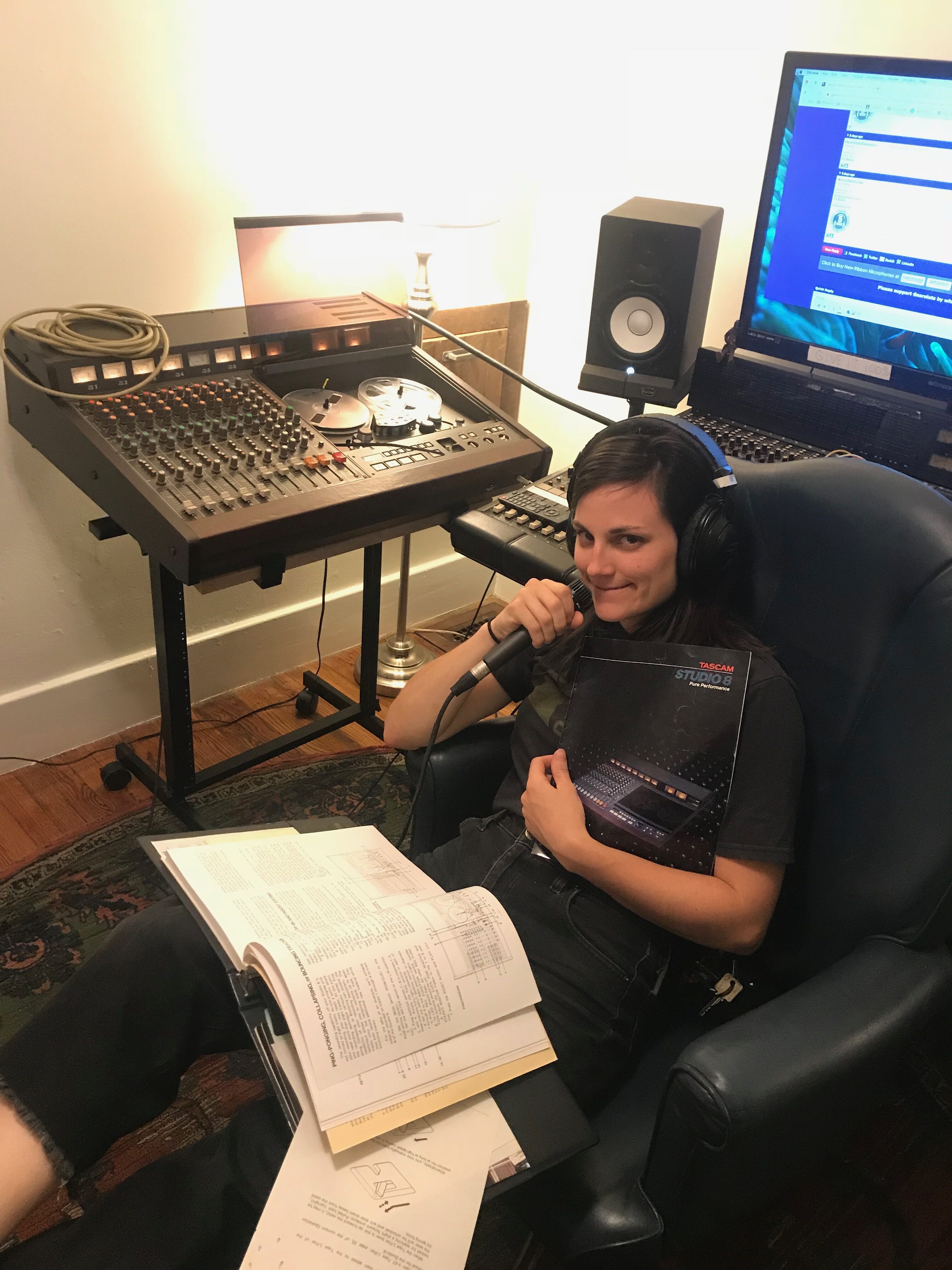
A few months ago, I wrote a blog about The Importance of Saying Yes while building a career in audio – something I am still continually practicing. While writing that blog, I realized I wanted to include a follow-up about the importance of saying no. Practicing this discernment is almost more important than saying yes, however, can be much more difficult!
I often find myself wanting to say yes to every opportunity that comes my way. It’s easy for me to do; I’ve grown accustomed to a full schedule of projects to balance, and I tend to be energized by my work. I’ve been in a building stage of my career for long enough to know that saying yes to one thing often leads to another opportunity. Sometimes it’s frightening to say no and feel like I’m missing out on something. The downside of this, however, is that during the times I get increasingly overwhelmed with my schedule, I’m unable to take necessary breaks for myself, which is ultimately bad for both my clients and myself.
 When I think about my ideal career it’s full of flexibility and also full of projects that I’m really passionate about – I want to work on a number of records every year, yet still have enough time to play drums in projects, go on the road, and experiment with making new things with new people. To make all these things happen, I have learned to be more and more selective with my time.
When I think about my ideal career it’s full of flexibility and also full of projects that I’m really passionate about – I want to work on a number of records every year, yet still have enough time to play drums in projects, go on the road, and experiment with making new things with new people. To make all these things happen, I have learned to be more and more selective with my time.
To be more selective, I have to be comfortable with drawing a line and saying no. This doesn’t necessarily mean just saying no to new projects, it means saying no to additional edits past the agreed limit, an extra few takes during tracking or additional unpaid time. It comes down to drawing boundaries and standing up for yourself and your work. Admittedly, I sometimes find it hard to do this in an environment that is so much about curating an atmosphere of support and trust, but it’s ultimately a disservice to everyone involved if I am making decisions from an “I can do everything” mindset. It’s important to set limits, and it’s important for artists to work within those chosen parameters. Saying no doesn’t mean that I don’t want to or can’t do something; it means that I know what’s best for me.
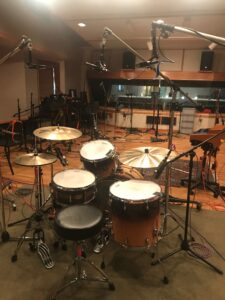 The tipping point comes when work is coming at a healthy pace (a result of saying yes), and I start to realize what I might not want to work on, or what might not be best for my time. This can be tricky to decide, as the answer isn’t always immediately clear. I often change my rates to meet my clients’ needs, and while I think most freelancers do this to some extent, after some time if you aren’t clear and firm about your rate, you may be undervaluing yourself. This is a concrete way to help establish what is and is not worth your time. This may come at a metaphorical price – you say yes to fewer projects, but the flipside is your work is more valued and more structured. I believe developing this skill is a key component to growing in a freelance career.
The tipping point comes when work is coming at a healthy pace (a result of saying yes), and I start to realize what I might not want to work on, or what might not be best for my time. This can be tricky to decide, as the answer isn’t always immediately clear. I often change my rates to meet my clients’ needs, and while I think most freelancers do this to some extent, after some time if you aren’t clear and firm about your rate, you may be undervaluing yourself. This is a concrete way to help establish what is and is not worth your time. This may come at a metaphorical price – you say yes to fewer projects, but the flipside is your work is more valued and more structured. I believe developing this skill is a key component to growing in a freelance career.
Saying no can be a scary thing – it can feel like a missed opportunity, but ultimately, learning how to say no respectfully but firmly is crucial when valuing yourself, your time, and the growth of your career. As individuals who work for ourselves, it’s our job to set limits and guidelines!
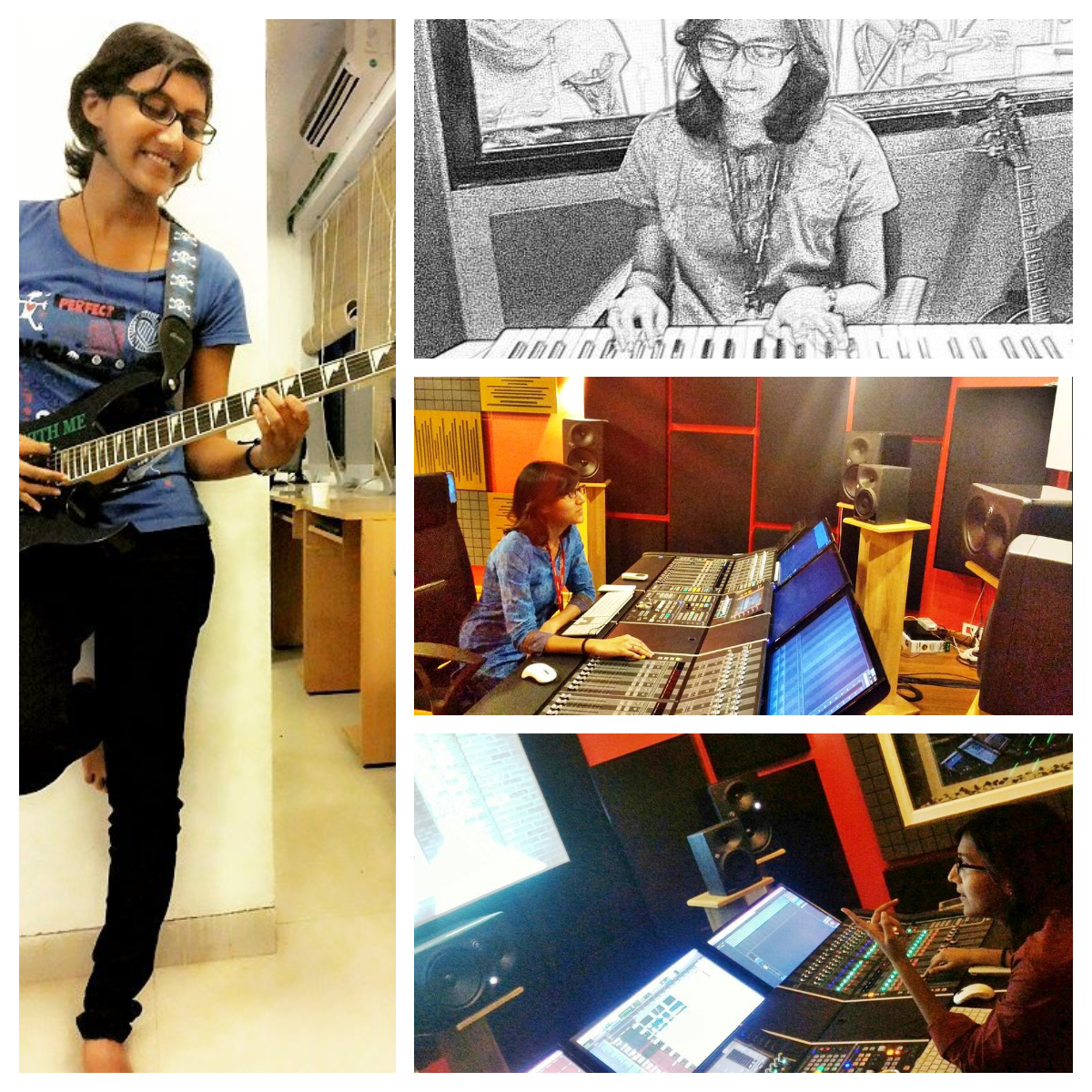
I come from a family of bankers, doctors, and engineers & therefore have always considered myself to be the black sheep of the family as I’m more inclined towards Art, People & Culture. When I was seven years old, it was my father who discovered that I had a fascination for sound and musical instruments and had me join piano lessons and thus I started training in Hindustani Classical Music. As a kid, I was an average student when it came to academics, had no extraordinary talents or goals. But I religiously stuck to music. It was my only solace, and I practiced and yearned to learn more every single day.
Towards the end of high school though, my parents were worried about the fact that I wasn’t doing well in my studies and hence decided to talk me out of pursuing music in the long term. They talked about the reality of this competitive field and that how hard it would be to succeed, especially for someone who personally knew no one belonging to her area of interest to mentor her. I abruptly quit studying music. All those years, I blamed my parents for talking me out of doing something I loved. I also hated Myself for accepting that maybe, I really wasn’t good enough.
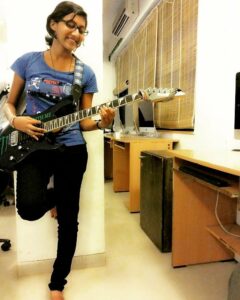 After finishing junior college, the idea was to get into any STEM field, but I knew that I’d drop out midway because I had no passion for those subjects. Neither wanting to waste my time nor my parents’ money, I started researching about music schools in India, came across a private institute that provided a bachelor’s degree in Mass Media with specialization in Sound Engineering and decided to opt for it. All my three years as an undergraduate in sound school, I was the only girl in an entire batch of around 70 students. I knew right from the beginning that if there weren’t any girls to even study this subject, I wouldn’t find many when I actually start working in the profession, either. That didn’t dim my love for Sound, though. It was uncharted yet engrossing territory for me. I was learning something entirely new, the technical aspects of sound and music; as to what goes on behind-the-stage – beyond all the glamour – in this artistic field; what it takes to brilliantly record a song track for millions to listen to, later on; and how sound adds to the visuals and brings an entire film to life! I mastered my digital software (DAW)/outboard gear skills and also began composing and producing music of my own. I did a number of internships alongside my course, including one in my college itself. I did have a few clashes with my male batch mates, but I was fortunate enough to have to best faculties to guide and support me.
After finishing junior college, the idea was to get into any STEM field, but I knew that I’d drop out midway because I had no passion for those subjects. Neither wanting to waste my time nor my parents’ money, I started researching about music schools in India, came across a private institute that provided a bachelor’s degree in Mass Media with specialization in Sound Engineering and decided to opt for it. All my three years as an undergraduate in sound school, I was the only girl in an entire batch of around 70 students. I knew right from the beginning that if there weren’t any girls to even study this subject, I wouldn’t find many when I actually start working in the profession, either. That didn’t dim my love for Sound, though. It was uncharted yet engrossing territory for me. I was learning something entirely new, the technical aspects of sound and music; as to what goes on behind-the-stage – beyond all the glamour – in this artistic field; what it takes to brilliantly record a song track for millions to listen to, later on; and how sound adds to the visuals and brings an entire film to life! I mastered my digital software (DAW)/outboard gear skills and also began composing and producing music of my own. I did a number of internships alongside my course, including one in my college itself. I did have a few clashes with my male batch mates, but I was fortunate enough to have to best faculties to guide and support me.
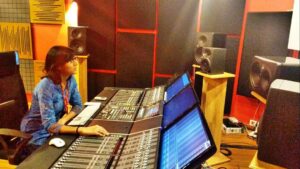 After course completion, I returned to Bombay – the Hub of the Indian Mainstream Media, Music and Film Industry. My parents asked me to look for a stable 9 to 5 regular day job. It was quite a task for me to explain to them that odd long working hours and erratic schedules are a part of this Field. I had the skills and the talent, but I lacked contacts and networks. My first job, which was at a popular TV Channel, lasted for not more than three months. The head of the sound department told me that he thought I was in this field just for Hobby and that I “should get into other mass media field such as Print like most women until I got married and then I wouldn’t have to work further.” Also, working night shifts was risky, and hence I was, in a way, a liability. I decided to quit.
After course completion, I returned to Bombay – the Hub of the Indian Mainstream Media, Music and Film Industry. My parents asked me to look for a stable 9 to 5 regular day job. It was quite a task for me to explain to them that odd long working hours and erratic schedules are a part of this Field. I had the skills and the talent, but I lacked contacts and networks. My first job, which was at a popular TV Channel, lasted for not more than three months. The head of the sound department told me that he thought I was in this field just for Hobby and that I “should get into other mass media field such as Print like most women until I got married and then I wouldn’t have to work further.” Also, working night shifts was risky, and hence I was, in a way, a liability. I decided to quit.
Why should I let anyone else dictate my future goals? I joined another studio, again for a very short period, as the owner didn’t believe that I’d succeed as an audio engineer and wanted me to work full-time but unpaid, under the name of exposure and experience. If I did get a good opportunity because of my skills, guys would claim that it was because “I was a woman” or that competition was less. What they didn’t gather was that as a female, I had a whole bunch of other challenges and issues to tackle, that they did not. Neither did I experience any sort of compensation or leniency because of my gender, nor was I expecting any. Another studio told me that I was aggressive, manly, and less feminine; a brash talker who lacked female creative input. How does one co-relate Creativity and gender roles, I wonder!
The idea of working for someone else was something that I completely started to abhor and also be scared of. I started questioning myself and having second thoughts that maybe I should go look for a less male-dominated field where I didn’t have to face such constant misogyny and be surrounded by the clichéd stereotypes and hackneyed ideas. My relatives and other acquaintances who knew nothing about my field also suggested the same.
I was so done with the system and the field that I was jobless for months. I even sold off my piano and guitar – my only prized possessions – out of frustration, because they were a constant reminder of something I could achieve but chose not to, anymore – Creating Music.
One day, I got a call from an acquaintance who wanted to know about my field for their daughter. I was flabbergasted. Was I to say that this field wasn’t for women even if they had the passion for it? Wouldn’t that make me an accomplice in patriarchy?
What message or example does this lay for the women of the younger generation who decide to get into this field and find themselves in the same predicament? They’d have no one to look up to or guide them. They too would feel similarly lost and decide to quit. And the gender ratio in our field would, yet again, remain uneven.
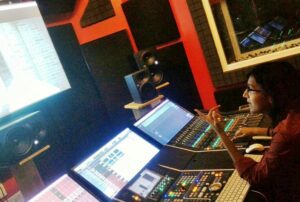 Hence giving up wasn’t a choice. I refused to start believing what everyone else had to say about me, just yet. I decided to get back into the field as a freelancer and started working on small-scale projects on Sound Design, Dubbing, Sync-Sound and also began conducting guest lectures & fun workshops on music programming, theory, arranging and production. For someone who had just started out on their own again, after a long hiatus due to personal setbacks, Struggle, competition, unstable money, and lack of projects was truly a messy phase. But with more and more work projects and practical experience, recognition came my way.
Hence giving up wasn’t a choice. I refused to start believing what everyone else had to say about me, just yet. I decided to get back into the field as a freelancer and started working on small-scale projects on Sound Design, Dubbing, Sync-Sound and also began conducting guest lectures & fun workshops on music programming, theory, arranging and production. For someone who had just started out on their own again, after a long hiatus due to personal setbacks, Struggle, competition, unstable money, and lack of projects was truly a messy phase. But with more and more work projects and practical experience, recognition came my way.
People are still surprised to see a woman working behind the Console. Some artists seem to be more comfortable with it. Especially female musicians or actors, who claim that they can be themselves and not at all feel intimidated as they do around male engineers. Now that’s a compliment! Work done with ease and devoid of any sort of limitations brings out the best results. I believe in promoting diversity, inclusion, gender equality, and defying all kinds of stereotypes that surround men and women, both. It’s high time we move past conservative gender roles. Women are much more than shopping and accessories.
No one should judge a person/an employee by the way they talk or walk or by what gender, race, or class they belong to, but only by their skills. “Am I getting the job done and am I getting it done Right? Am I bringing quality output to the table?” is all that should matter. The most significant work ethic that everyone should adopt, no matter what field they belong to, is that there has to be boundaries between one’s personal & professional life and everyone should try and respect them. I’m so, so grateful to the few good men who have been a consistent support and have helped me with their tremendous insights and knowledge with regards to not just the field but the business and politics behind it. No gender is superior or inferior. We shouldn’t tear each other down and instead be open to work as a collective, share ideas, create, innovate & inspire. And thus, I encourage and hope that more and more women opt for unconventional career paths, have an undeterred approach towards their goals, and also help their fellow female co-workers along the way.
As for me, my journey has just started, and I still have a long way to go and a great deal to learn.
 Priyanka SE, Bombay IN: Based in Bombay, India, Priyanka SE is an audio engineer and music producer who’s been working as a freelancer in the Bollywood Industry on versatile mainstream and indie media, audio and music projects for the past five years. She has a distinct taste in music, irrespective of the genre and language, especially Blues, Jazz, Sufi, Indie, Folk Fusion, and Film Scores. Apart from that, she’s also an avid reader, an amateur writer, and Equal Gender Rights activist.
Priyanka SE, Bombay IN: Based in Bombay, India, Priyanka SE is an audio engineer and music producer who’s been working as a freelancer in the Bollywood Industry on versatile mainstream and indie media, audio and music projects for the past five years. She has a distinct taste in music, irrespective of the genre and language, especially Blues, Jazz, Sufi, Indie, Folk Fusion, and Film Scores. Apart from that, she’s also an avid reader, an amateur writer, and Equal Gender Rights activist.
Instagram: https://www.

It’s easy to miss the SoundGirls news and blogs, so we have put together a round-up of the blogs, articles, and news from the past week. You can keep up to date and read more at SoundGirls.org
https://soundgirls.org/foh-lisa-affenzeller-chasing-the-magic/
One Is Not Enough: Understanding Bias in the Audio Community
 We just got some new merch in. Long Sleeves, Onesies, Toddlers, Gig Bags, and Canvas Totes. Check it out Here
We just got some new merch in. Long Sleeves, Onesies, Toddlers, Gig Bags, and Canvas Totes. Check it out Here
 Sisters of Sound Podcast – Grammy Nominated Engineer Simone Torres
Sisters of Sound Podcast – Grammy Nominated Engineer Simone Torres

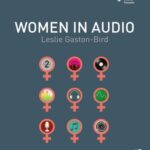 Congratulations to our U.K. Chapter Director, Scholarship Chair, and general badass Leslie Gaston-Bird for Writing Women in Audio. You can pre-order your copy and we will be adding a few copies to our Lending Library.
Congratulations to our U.K. Chapter Director, Scholarship Chair, and general badass Leslie Gaston-Bird for Writing Women in Audio. You can pre-order your copy and we will be adding a few copies to our Lending Library.
Women in Audio features almost 100 profiles and stories of audio engineers who are women and have achieved success throughout the history of the trade. Beginning with a historical view, the book covers the achievements of women in various audio professions, then focuses on organizations that support and train women and girls in the industry. What follows are eight chapters divided by discipline highlighting accomplished women in various audio fields: radio, sound for film and television, music recording and electronic music, hardware and software design, acoustics, live sound and sound for theater, education, audio for games, virtual reality, augmented reality, and mixed reality as well as immersive sound.
Women in Audio is a valuable resource for professionals of all levels, educators and students looking to gain insight into the careers of trailblazing women in audio-related fields and represents required reading for those looking to add diversity to their music technology programs.
 SoundGirls Co-Director Tiffany Hendren on Roadie Free Radio
SoundGirls Co-Director Tiffany Hendren on Roadie Free Radio
New York SoundGirls & Female Frequency present Live Show Workshop
https://soundgirls.org/about-us/soundgirls-chapters/
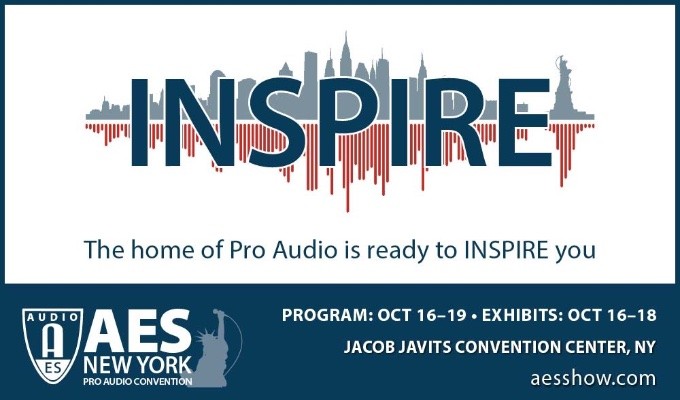
 AES Exhibits-Plus Badges
AES Exhibits-Plus BadgesYour Exhibits-Plus VIP Link/Code: AES19SOUNDGIRLS
The Exhibits-Plus badge is a Free ticket to getting into the AES Exhibition – the nation’s largest collection of professional audio manufacturers exhibiting their products and latest technologies – plus you can attend many Special Events including the Project Studio Expo, Live Sound Expo and more. Best of all, Exhibits-Plus badges are completely FREE for those who register in advance.
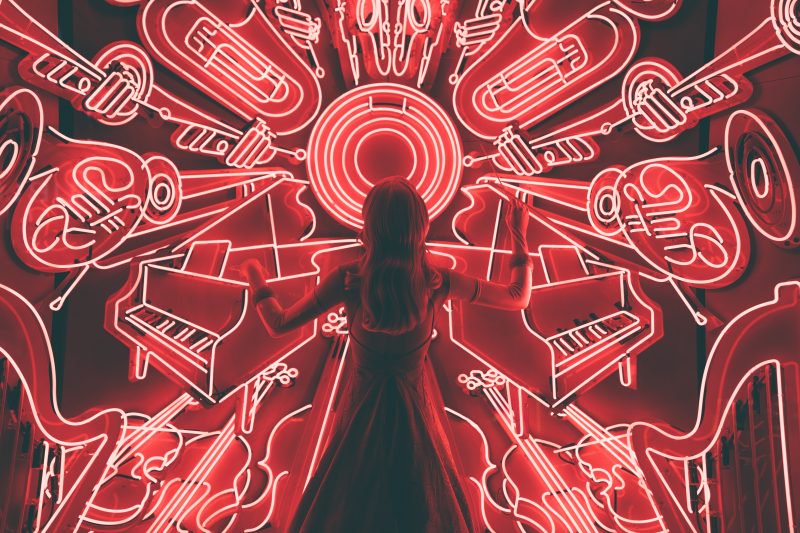
One of the first things I do when I schedule a time to record a band is asking them what albums, and songs they like the sound quality. I ask so I get a good idea of what they might be *subconsciously* looking for in a mix or master. Then I will ask, “What would you like your reference track for the mixing process to be?” I ask these in two separate questions because what you like and what’s right for a mix of a particular song can be two different things. I want to have options, so when I go to pick a reference track- I am picking one that’s right for the song, and that the band will like too.
Reference tracks are essential because often while mixing, your ears can lose perspective. A reference track is helpful to have this happens; you can play the track and compare it to where your mix. Once you’ve done that you can hone in on anything that isn’t where it needs to be in your mix- and with a specific goal in mind you can get it where it needs to be because of the reference track.
Now, to utilize this correctly, you have to do it right. You don’t want to just download your reference track from Youtube and upload that wav file into Pro-Tools. You also don’t want to use an MP3. When using a reference track, you want to get the rawest and uncompressed version of the track you can find (WAV file). Another thing, you need to know how your reference track translates onto different sound systems. Listen to the track in your car, at your house, on your laptop, on your headphones, in your parents’ car…you get the point. Then do the same for YOUR mix. Listen to it everywhere you can, so you know exactly what to fix when you sit back down at your computer to do revisions.
You can use plug-ins to help you compare the track to your mix. Magic AB is my favorite. It’s straightforward to use. You upload both tracks, one is A, and one is B. Then you level the two songs out, so your ears aren’t being tricked because one mix is louder than the other (Hello, Fletcher Munson), and then you just click between A and B to compare your reference track to your mix! Easy as that!
I hope this helps your mixes grow as it helped mine when I discovered how to use reference tracks! As always, you can send me examples of your mixes, or even email me just to chat about how you noticed a difference in the process after you started using reference tracks at virginia@backbeat365.com.
SoundGirls Members have the chance to shadow and assist with load in, set up, and load out with Loreen Bohannon Monitor Engineer for. Our members who work in Lighting also have the chance to shadow. National Touring Artist will be disclosed upon acceptance.
So to recap
You will work the entire show under the supervision of Sound and Lights, You are expected to show up on time and stay until load out is complete, and you will be provided meals. Only two people per shows will be chosen (sound and lights).